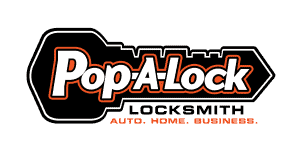Learn About 5 Keys You Might Encounter In Your Life
When most folks are asked to describe what a key is, they would likely call it vintage, ornate, or something they use to open the doors of their home. However, many consumers are unaware of how many locking mechanisms and different keys the market has to offer. Even though most keys serve the overall same purpose, each one is cut using a different technique, with each best suited to various kinds of locking mechanisms.
1) Splines:
This variety of keys are among the more complicated ones, and they often see use in gear machinery. They include a metal shaft, around which the outer circumference is sectioned into small teeth. These teeth-like structures are what locks the key into the keyway of the associated locking mechanisms, providing the user torque when the key is turned.
2) Tangent keys:
These are commonly featured in lines of heavy-duty work. Such keys are often rectangular or even shaped like a wedge. One or a pair of recesses are carved into their metal shaft. Tangent members get placed at angles into the recesses, letting one edge lock into the shaft, while another extends out just past it. Once tangent members get placed, tangent keys are inserted into locking mechanisms which are the same shape of those keys, provided there’s a similar number of negative recesses for accommodating the existing tangent members.
3) Sunk keys:
These see use in both automotive work and heavy machinery. Sunk keys are a kind of key that makes use of a distinct metal shape that gets inserted into a key shaft or locking mechanism of precisely the same size and shape. Sunk keys are commonly available as woodruff keys, gib-head keys, square sunk keys, rectangular sunk keys, parallel sunk keys, or feather keys. Each kind of shaped just slightly differently and can’t be interchanged from one keyhole to the next. For instance, you can’t forcibly insert a square-shaped key into a tapered keyway.
4) Saddle keys:
Saddle keys are composed of a pair of sections that perfectly fit into the keyway. For flat saddle keys, the key shaft features a recess which fits into a flat and rectangular member. When the member shaft gets inserted into a keyway, the specific shape of that keyway is what holds the member into place. In most hollow saddle keys, their shaft is totally smooth and also cylindrical, whereas the member itself is rectangular with a carved-out and curved side to match the shaft curve perfectly. The user inserts the cylindrical shaft into a keyway, and the member is able to slide into a recessed keyway down the shaft, which holds it in its proper place place. Many saddle keys are able to fall out of keyways with enough movement, so these are often used only for light-duty work.
5) Round keys:
These are pretty common in light-duty work. A small recess is drilled into the cylindrical metal shaft of a round key. It accommodates a protruding round section. This entire key gets placed into a keyway, one that is sized just right to fit the cylindrical shaft but also provide a pathway for the associated protruding section. Then, the key is often turned to get secured into place in the locking mechanism.
If you have any questions regarding the array of services provided by our locksmiths at Pop-A-Lock Houston, please feel free to contact us or call 713-722-0060!


